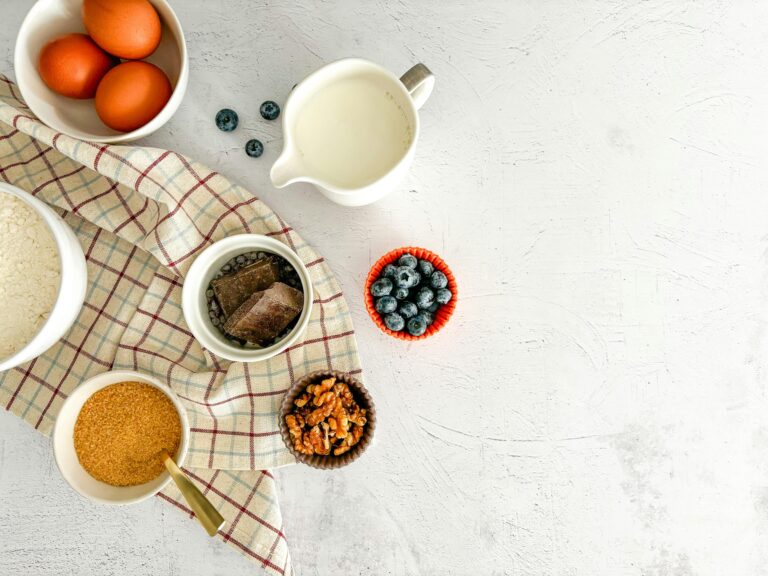Busting Baking Myths: Room Temperature Ingredients Aren’t Important

In the world of baking, myths and misconceptions abound. Passed down from one generation to another, these baking myths can sometimes hinder the baking process and result in less-than-perfect outcomes. It’s essential to debunk these myths to ensure a successful and enjoyable baking experience. Today, we’re tackling a prevalent myth: that having ingredients at room temperature isn’t important.
Why Room Temperature Ingredients Matter
The myth that room temperature ingredients don’t matter in baking is one that needs to be busted. The temperature of your ingredients significantly affects the mixing process, the texture, and the overall quality of your baked goods. Here’s why:
Mixability and Consistency: When ingredients are at room temperature, they mix together more smoothly and uniformly. Cold ingredients can lead to uneven mixing, resulting in a batter or dough that has lumps or inconsistent textures. This can affect the final product, making it dense or unevenly baked.
Chemical Reactions: Baking involves various chemical reactions, such as the creaming of butter and sugar, which creates air pockets that help the dough rise. Room temperature ingredients allow these reactions to occur more effectively. Cold ingredients can hinder these processes, leading to a less desirable texture and rise in your baked goods.
Emulsion Stability: Room temperature ingredients, particularly butter and eggs, help create stable emulsions. This is crucial in recipes like cakes and cookies, where the fat and liquid components need to blend seamlessly. Cold butter, for instance, can curdle the batter, while room temperature butter incorporates more air, leading to a fluffier texture.
Disadvantages of Not Using Room Temperature Ingredients
Let’s delve into some specific disadvantages of not using room temperature ingredients and how they can impact your baking:
- Poor Texture: Cold ingredients can lead to a dense and heavy texture, especially in cakes and muffins. The batter doesn’t aerate properly, resulting in a final product that lacks the desired lightness.
- Uneven Baking: Cold ingredients can cause uneven baking. For example, if the butter is too cold, it doesn’t distribute evenly throughout the batter, leading to inconsistent results. Some parts of the cake might be overbaked while others remain undercooked.
- Curdled Batter: When cold ingredients are mixed with room temperature or warm ingredients, the mixture can curdle. This is particularly problematic in recipes that rely on a smooth batter or dough, affecting the overall structure and taste of the baked good.
- Reduced Volume: In recipes that require creaming butter and sugar, using cold butter can prevent the mixture from becoming fluffy and light. This results in a reduced volume, making cakes and cookies denser than intended.
- Compromised Flavor: Room temperature ingredients blend more thoroughly, ensuring that flavors are evenly distributed. Cold ingredients can lead to pockets of concentrated flavors, affecting the overall taste of the final product.
Baking Tips for Using Room Temperature Ingredients
Here are some top baking tips to ensure your ingredients are at the right temperature for optimal results:
- Plan Ahead: Take your ingredients out of the refrigerator at least 30 minutes to an hour before you start baking. This gives them enough time to reach room temperature.
- Quick Warm-Up: If you’re short on time, you can gently warm eggs by placing them in a bowl of warm (not hot) water for a few minutes. For butter, cut it into small pieces to help it warm up faster.
- Check Temperature: Use a kitchen thermometer to ensure that your ingredients are around 68-70°F (20-21°C), which is considered room temperature for baking.
Embrace Sustainable Packaging with Ecopack
Using Ecopack’s sustainable packaging solutions in your baking process is not only good for your recipes but also beneficial for the environment. As a leading packaging company in India, Ecopack provides a range of eco-friendly products that support sustainable baking practices.
Sustainable Alternatives: Ecopack offers sustainable alternatives to traditional baking tools and packaging. For instance, our eco-friendly wrap sheets and plumpy moulds are perfect for various baking needs, ensuring that your baking process is both efficient and environmentally responsible.
Commitment to the Environment: By choosing Ecopack, you contribute to a healthier environment. Our products are made from biodegradable and recyclable materials, reducing waste and supporting sustainable practices in the baking industry.
Quality and Convenience: Ecopack’s products are designed for convenience without compromising on quality. Whether you’re a professional baker or a home cook, our sustainable packaging solutions make baking easier and more enjoyable.
Bust the Myths & Improve Your Baking
crucial for achieving the best results in your baking endeavors. Understanding how temperature affects the mixability, texture, and overall outcome of your baked goods can make a significant difference. By incorporating these insights and using Ecopack’s sustainable products, you can elevate your baking game and contribute to a better environment.
If you’re keen on learning more baking tips and exploring new recipes, check out our Ecopack cookbook. It’s packed with a variety of easy desserts recipes for both Western and Indian delicacies. The cookbook is an excellent resource for anyone looking to improve their baking skills and make informed choices about sustainable packaging alternatives.
Celebrate baking with Ecopack and make every recipe a success while supporting sustainable practices. Happy baking!


